(在家觀看 = 0%,在校觀看 = 100%)
100% 在校觀看日期及時間:
自由選擇,點選以下地區觀看辦公時間及位置
課時: 24 小時
享用時期: 8 星期。進度由您控制,可快可慢。
課堂錄影導師:Larry
在校免費試睇:首 3 小時,請致電以上地點與本中心職員預約。
本課程提供在校免費重睇及導師解答服務。
(在家觀看 = 25%,在校觀看 = 75%)
25% 在家觀看日期及時間:
每天 24 小時全天候不限次數地觀看
75% 在校觀看日期及時間:
本中心辦公時間內自由選擇,點選以下地區觀看辦公時間及位置
旺角:$4,980 報名 phone

電話:2332-6544
觀塘:$4,980 報名 phone

電話:3563-8425
北角:$4,980 報名 phone

電話:3580-1893
沙田:$4,980 報名 phone

電話:2151-9360
屯門:$4,980 報名 phone

電話:3523-1560
課時: 24 小時
在家及在校觀看: 在家觀看首 6 小時,在校觀看尾 18 小時。
享用時期: 8 星期。進度由您控制,可快可慢。
課堂錄影導師:Larry
在校免費試睇:首 3 小時,請致電以上地點與本中心職員預約。
本課程提供在校免費重睇及導師解答服務。
Palo Alto Networks 是一家全球性的網路安全公司,總部位於美國。該公司成立於 2005 年,旨在提供最先進的網路安全技術,幫助客戶保護其網路不受惡意軟體、網路攻擊和資料外洩的侵害。
Palo Alto Networks 開發和提供一系列網路安全解決方案,包括下一代防火牆 (Next Generation Firewall)、雲端安全 (Prisma Cloud)、網路安全分析 (Cortex XDR) 和端點保護 (Endpoint Protection)等。
這些解決方案都基於自主研發的技術,如安全規則 (Security Policy)、威脅情報 (Threat Intelligence)和自動化安全控制等 (Cortex XSOAR),以確保客戶的網路安全。
Palo Alto Networks 的客戶包括全球範圍內的企業、政府機構、教育機構和服務提供商等。
Palo Alto Networks 在全球擁有多個研發中心和辦事處,僱用了數千名員工,是網路安全行業的三大領導者之一,詳見以下 Gartner - Magic Quadrant for Network Firewalls:
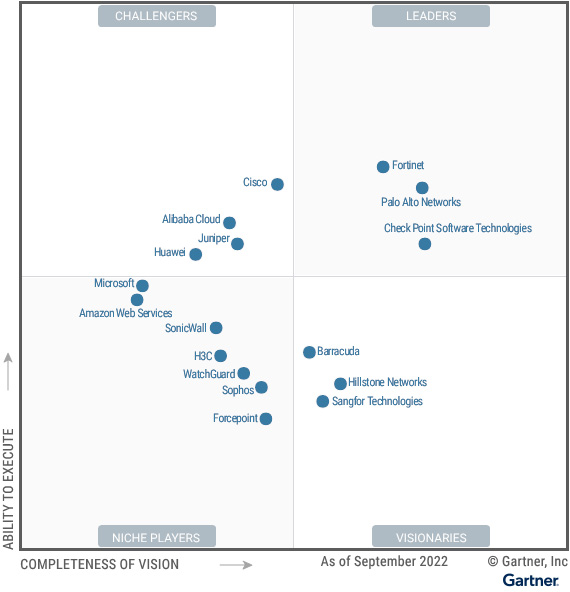
作為一家致力於網路安全的公司,Palo Alto Networks 注重推動網路安全的創新和發展,與業內其他公司和組織合作,共同應對不斷出現的網路威脅。
Palo Alto Networks 的市值約為 540 億美元 (超過 4210 億港元),是全球網路安全行業的領先企業之一。
根據該公司的年度財報數據顯示,其全年營收為 55 億美元,較上年同期增長 29%;毛利約為 37 億美元。
Palo Alto Networks 在網路安全市場佔有相當大的市場份額,特別是在下一代防火牆 (Next Generation Firewall) 和網路安全分析等領域表現優異。
據市場研究機構 IDC 最近的報告顯示:
- Palo Alto Networks 在 <<全球防火牆市場份額>> 排名第一,市場佔有率為15.9%;

總體而言,Palo Alto Networks 在網路安全行業擁有穩健的財務狀況和強大的市場地位,並持續通過技術創新和業務拓展來推動其在市場中的競爭力。
Palo Alto Networks 的核心技術:PAN-OS (本課程的主要內容)
PAN-OS 基於專用硬體 (包括 PA 系列 Next Generation Firewall) 和虛擬化平台 (包括 VM 系列及 CN 系列),提供了一系列網路安全解決方案,包括下一代防火牆、雲端安全、網路安全分析和端點保護等。PAN-OS 擁有一系列先進的功能,包括:
- 智能防火牆:利用深度學習 (Machine Learning powered) 和人工智慧 (Artificial Intelligence) 技術,對網路流量進行實時分析和辨識,並能夠自動學習和調整防火牆規則。
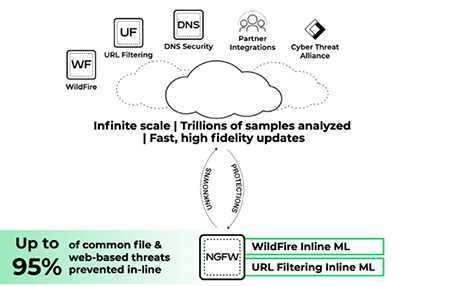
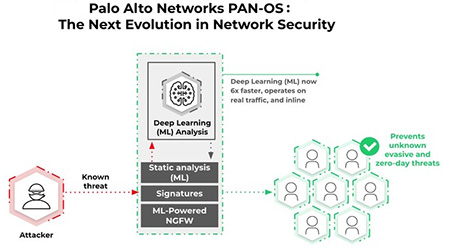
- 安全分析:Palo Alto WildFire 將大量的網路安全數據進行收集和分析,以便及時發現和應對各種威脅,包括惡意軟體、網路攻擊和資料外洩等。
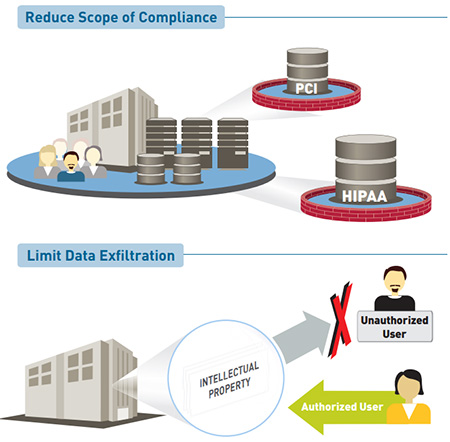
- 網路分段:通過分割網路流量,使得各個部門或用戶之間的流量互相隔離,以減少威脅的擴散和風險的傳播。

- 自動化安全控制:通過自動化技術,可以自動化執行安全操作,如阻止網路流量、隔離感染主機和防止資料外洩等。
Palo Alto Networks PA/VM/CN 系列防火牆是高度集成和自動化的技術,可以有效地防止網路受到各種尖端的威脅,如病毒、惡意軟件等。
獲得 PCNSA 認證的人,展示了他們具備有操作 Palo Alto Networks 下一代防火牆來保護網路免受尖端網路威脅的能力。
| 課程名稱: |
Palo Alto Networks Certified Network Security Administrator (PCNSA) 國際認可證書課程 - 簡稱:Palo Alto Networks PCNSA Training Course |
| 課程時數: | 合共 24 小時 (共 8 堂) |
| 適合人士: | 對電腦網路安全有基本認識或有志投身 I.T. 界的人士 |
| 授課語言: | 以廣東話為主,輔以英語 |
| 課程筆記: | 本中心導師親自編寫英文為主筆記,而部份英文字附有中文對照。 |
| 1. Larry Chan 親自教授: | Larry 善於控制學習節奏,深入淺出,令學員在輕鬆氣氛下,掌握電腦技巧。 |
| 2. Larry Chan 親自編寫筆記: | Larry 親自編寫筆記,絕對適合 PCNSA 考試及實際工作之用。 |
| 3. 提供模擬考試題目: | 本中心為學員提供 PCNSA 的模擬考試題目,每條考試題目均附有標準答案。而較難理解的題目,均會附有 Larry 的解釋。 |
| 4. 理論與實習並重: |
本中心的 PCNSA 課程大部份時間以實習示範形式教授,令學員真正了解及掌握 Palo Alto PAN-OS 防火牆管理的重要技巧。 |
| 5. 一人一機上課: | 本課程以一人一機模式上課。 |
| 6. 免費重讀: | 傳統課堂學員可於課程結束後三個月內免費重看課堂錄影。 |
只要你於下列科目取得合格成績,便可獲 Palo Alto 頒發 PCNSA 國際認可證書:
|
本中心為 Palo Alto Networks 指定的 PCNSA 考試試場,報考時請致電本中心,登記欲報考之科目考試編號 (即 PCNSA)、考試日期及時間 (最快可即日報考)。臨考試前要出示身份證及繳付考試費
HK$1,271
。 |
| 課程名稱:Palo Alto Networks Certified Network Security Administrator (PCNSA) 國際認可證書課程 - 簡稱:Palo Alto Networks PCNSA Training Course |
1. Device Management and Services
1.1 Firewall Management Interfaces
1.1.1 Management interfaces
1.1.2 Methods of access
1.1.3 Web interface
1.1.4 Panorama
1.1.5 XML API
1.1.6 Access restrictions
1.2 Introduction to PANOS
1.2.1 App-ID
1.2.2 Content-ID
1.2.3 Device-ID
1.2.4 User-ID
1.2.5 WildFire Inline ML
1.3 Deploying the VM-Series Firewall
1.3.1 VM-Series Models
1.3.2 Supported Deployments on VMware vSphere
1.3.3 VM-Series on VMware System Requirements and Limitations
1.3.4 Plan the Interfaces for the VM-Series for ESXi
1.3.5 Deploying the OVA for practice
1.3.6 Perform Initial Configuration on the VM-Series on ESXi
1.4 Licensing
1.4.1 License Types
1.4.2 Flexible vCPUs and Fixed Model Licensing
1.4.3 Flexible vCPUs and Fixed Model Deployment
1.4.4 When licenses expire
1.5 Deploying Palo Alto VM-Series Next Generation Firewall on Clouds
1.5.1 About the VM-Series Firewall on Azure
1.5.2 Azure Networking and VM-Series Firewall
1.5.3 VM-Series Firewall Templates on Azure Cloud
1.5.4 Deployments scenarios supported on Azure Cloud
1.5.5 Deploy the VM-Series Firewall from the Azure Marketplace (Solution Template)
2. Network Segmentation with Interfaces and Zones
2.1 Designing Network Segmentation for a Reduced Attack Surface
2.1.1 Background
2.2 Configure Interfaces and Zones
2.3 Configure a Basic Security Policy between Zones
2.3.1 Background information and General concepts of Security Policy
2.3.2 Detailed Firewall Packet processing flow
2.4 Assessing Network Traffic
2.5 Service Route
3. Firewall Administration
3.1 Understanding the Candidate Configuration
3.2 Save and Export Firewall Configurations
3.2.1 Saving a local backup
3.2.2 Exporting Configurations
3.3 Restoring and Reverting Firewall Configuration
3.3.1 Revert to the current running configuration (file named running-config.xml).
3.3.2 Revert to a previous version of the running configuration that is stored on the firewall
3.3.3 Revert to Custom-named candidate configuration snapshot
3.3.4 Revert to a running or candidate configuration that you previously exported to an external host
4. Administrative Accounts
4.1 Administrative Role Types
4.1.1 Role Based
4.1.2 Dynamic
4.2 Configuring Admin Role Profile
4.3 Inside an Admin Role Profile Construction
4.4 Create and Configure Firewall Administrator Account
4.5 Configure Tracking of Administrator Activity
5. Zone Protection and DoS Protection
5.1 Packet Buffer Protection
5.1.1 Global Packet Buffer Protection
5.1.2 Per-Zone Packet Buffer Protection
5.1.3 Packet Buffer Protection Based on Buffer Utilization
5.2 Zone Attacks
5.3 Zone Defense Tools
5.3.1 Zone Protection profiles
5.3.2 DoS Protection profiles and policy rules
5.3.3 Summary
5.3.4 Firewall Placement for DoS Protection
5.4 Configuring and Applying a Zone Protection Profile
5.4.1 Flood protection in Zone Protection profile
5.4.2 Reconnaissance Protection in Zone Protection profile
5.4.3 Packet-Based Attack Protection
5.4.4 Protocol Protection
5.4.5 Ethernet SGT Protection
5.4.6 L3 & L4 Header Inspection
5.4.7 Configure Email notification for Alerts
5.5 DoS Protection Profiles and Policy Rules
6. App-ID
6.1 Introduction to App-ID
6.2 Streamlined App-ID Policy Rules
6.2.1 Create an Application Filter Using Tags
6.2.2 Background information about Decryption and APP-ID policy inspection
6.2.3 Keys and Certificates for Decryption Policies
6.2.4 Configuring SSL Decryption with SSL Forward Proxy
6.2.5 Creating a Decryption Policy rule
6.2.6 Verify Decryption
6.3 Decryption Exclusions
6.3.1 Reasons to Exclude Web sites from being decrypted by PA firewall
6.3.2 Palo Alto Networks Predefined Decryption Exclusions
6.3.3 Exclude a Web Site from Decryption for Technical Reasons
6.3.4 Exclude a Web Site from Decryption for Compliance and Privacy Reasons
6.3.5 Temporarily Disable SSL Decryption
6.3.6 Decryption Log
7. Security Profiles
7.1 Antivirus Profile
7.2 Anti-Spyware profiles
7.2.1 Default profile
7.2.2 Strict profile
7.3 Vulnerability Protection profiles
7.4 URL Filtering Profiles
7.5 Data Filtering Profiles
7.5.1 Creating a Data Filtering Profile
7.6 File Blocking Profiles
7.6.1 Basic file blocking
7.6.2 Strict file blocking
8. External Dynamic List
8.1 Introduction to External Dynamic List
8.2 EDL Types
8.2.1 Predefined IP Address
8.2.2 Predefined URL List
8.2.3 IP Address
8.2.4 Domain
8.2.5 URL
8.2.6 Equipment Identity
8.2.7 Subscriber Identity
8.3 EDL Formatting
8.3.1 IP Address List
8.3.2 Domain List
8.4 Built-in External Dynamic Lists
8.4.1 Palo Alto Networks Bulletproof IP Addresses
8.4.2 Palo Alto Networks High-Risk IP Addresses
8.4.3 Palo Alto Networks Known Malicious IP Addresses
8.4.4 Palo Alto Networks Tor Exit IP Addresses
8.5 Configure the Firewall to Access an External Dynamic List
8.6 Enforce Policy on an External Dynamic List
8.7 Retrieve an External Dynamic List from the Web Server
8.8 Using EDL Hosting Service feeds
9. Advanced WildFire
9.1 Introduction
9.2 Available subscription options
9.2.1 WildFire
9.2.2 Advanced WildFire
9.2.3 Standalone WildFire API
9.3 WildFire Features
9.3.1 Real-Time Updates
9.3.2 Five-Minute Updates (All PAN-OS versions)
9.3.3 Advanced WildFire Inline ML—(PAN-OS 10.0 and later)
9.3.4 File Type Support
9.3.5 Advanced WildFire API
9.3.6 WildFire Private and Hybrid Cloud Support
9.3.7 Intelligent Run-time Memory Analysis
9.4 Advanced WildFire Concepts
9.4.1 Samples
9.4.2 Firewall Fo4warding
9.4.3 Advanced WildFire Analysis Environment
9.4.4 Advanced WildFire Inline ML
9.4.5 Advanced WildFire Verdicts
10. Managing Policy Objects
10.1 Address and Address Group Objects
10.1.1 How to tag objects
10.1.2 Address Object
10.1.3 Address Group object
10.2 Services
10.3 Application Filters
10.4 Application groups
10.5 Nesting application groups and filters
10.6 Application Characteristics
10.7 Policy Design and Evaluation
10.7.1 Create Security Policy Rules by App-ID instead of by Service
10.7.2 Rule Shadowing
10.7.3 Policy Usage statistics
10.7.4 Security Policy Rule Logging options
10.7.5 A Brief description of User-ID
10.7.6 Policy test match tool
10.7.7 Traffic Logging with Tap zone interface
10.7.8 Virtual Wire Interface
以下列出使用 PAN-OS 的 PA 系列 Next Generation Firewall:
PA-220R Firewall


PA-400 Series Firewalls
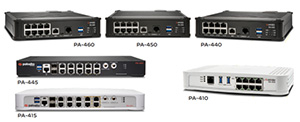

PA-500 Firewall

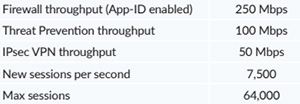
PA-800 Series Firewalls

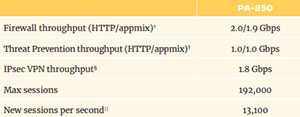
PA-1400 Series Firewalls
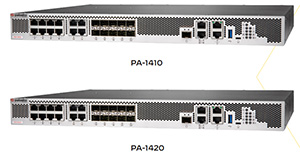

PA-3000 Series Firewalls
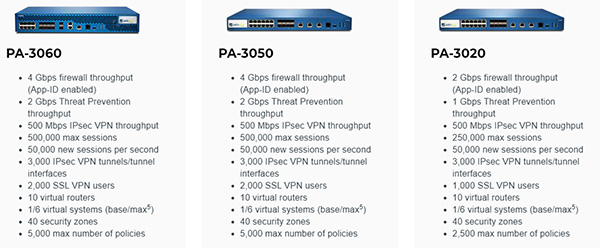
PA-3200 Series Firewalls
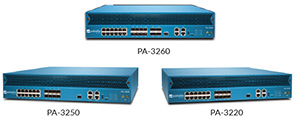

PA-3400 Series Firewalls
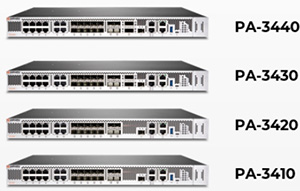
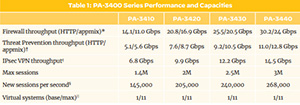
PA-5000 Series Firewalls
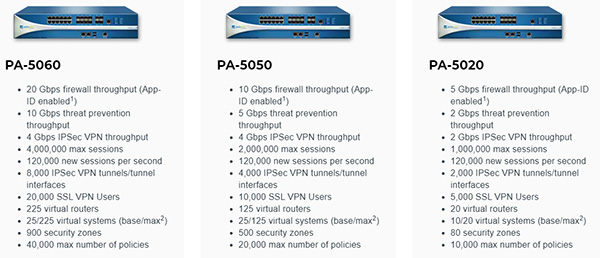
PA-5200 Series Firewalls
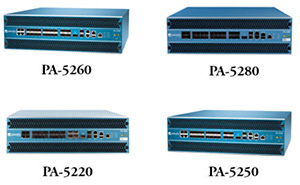

PA-5400 Series Firewalls
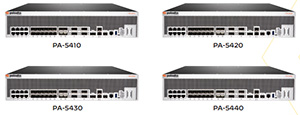

PA-5450 Firewall
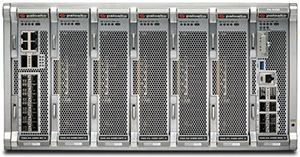
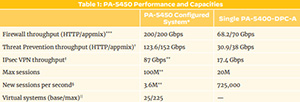
PA-7000 Series Firewalls
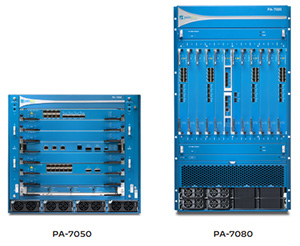
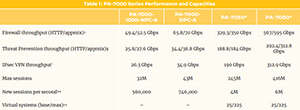
VM (Virtual Machine) Series Firewalls
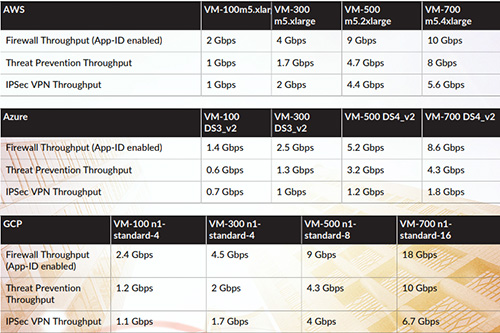
CN (Container) Series Firewall
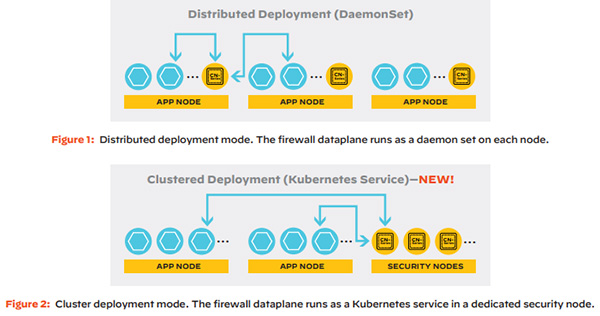
 付款。
付款。